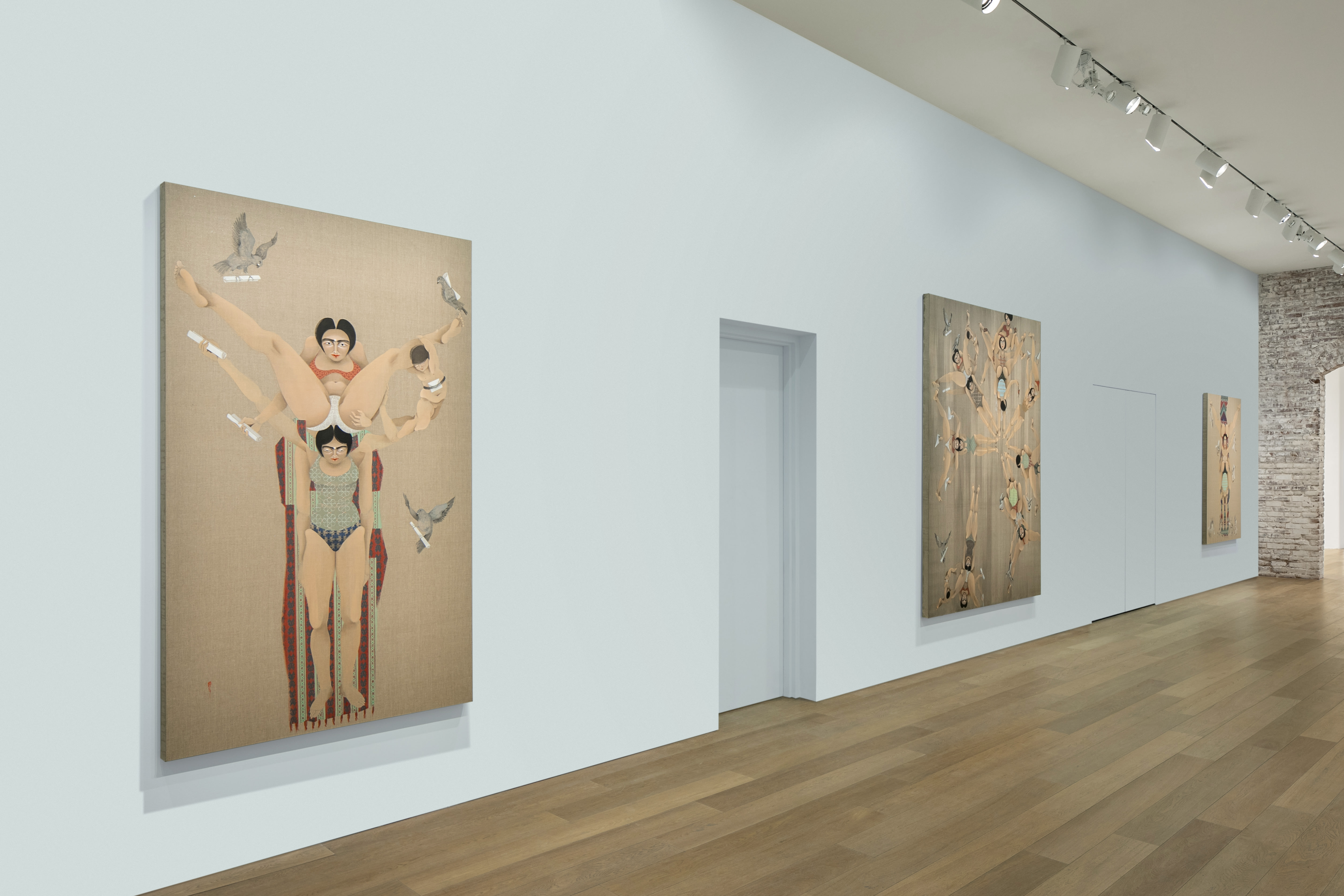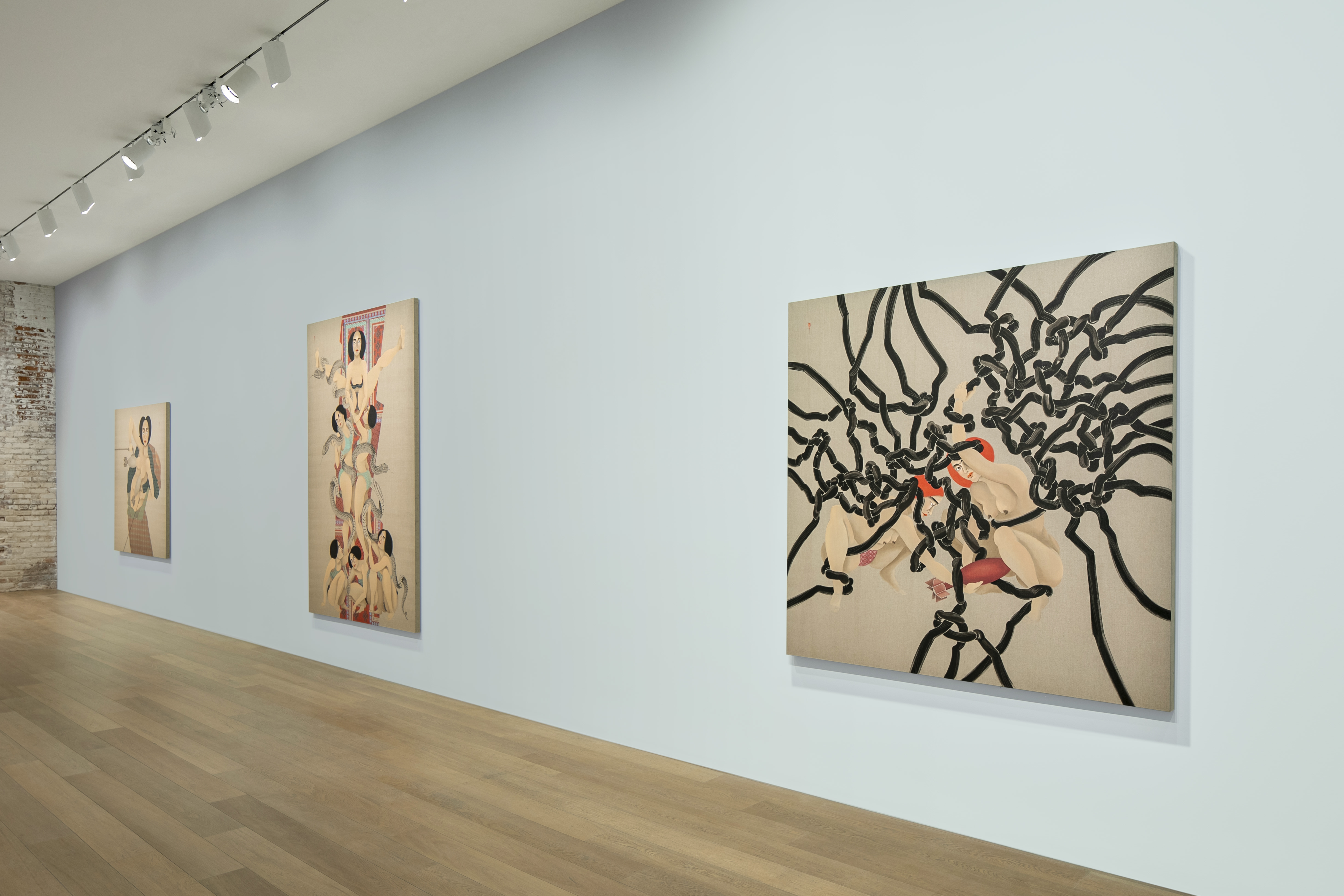Overview
In paintings that embody the complexities of diasporic experience, Hayv Kahraman challenges the power and assimilation practices of colonizing states. Her works are populated by graceful, commanding women in intertwining poses, with inky halos of hair and silken skin rendered delicately in layers of oil paint. The artist borrows from diverse techniques and visual references, from the contrapposto and modeling of Renaissance painting to Arabic illuminated manuscripts like the Maqamat al-Hariri and geometric Islamic patterning. Kahraman depicts her translucent apparitions as a collective of Middle Eastern women, a motif she employs to celebrate her cultural identity, once repressed by violent assimilative forces. Yet, while her figures act as extensions of the self, their presence transcends self-portraiture to confront the dehumanization of displaced populations worldwide.
In paintings that embody the complexities of diasporic experience, Hayv Kahraman challenges the power and assimilation practices of colonizing states. Her works are populated by graceful, commanding women in intertwining poses, with inky halos of hair and silken skin rendered delicately in layers of oil paint. The artist borrows from diverse techniques and visual references, from the contrapposto and modeling of Renaissance painting to Arabic illuminated manuscripts like the Maqamat al-Hariri and geometric Islamic patterning. Kahraman depicts her translucent apparitions as a collective of Middle Eastern women, a motif she employs to celebrate her cultural identity, once repressed by violent assimilative forces. Yet, while her figures act as extensions of the self, their presence transcends self-portraiture to confront the dehumanization of displaced populations worldwide.
Kahraman’s works are intrinsically tied to her life experiences, which offer rich conceptual territory from which to examine states of in-betweenness and the othering of refugees. The artist fled the violence of the first Gulf War with her family at age 11, leaving her home in Iraq for Sweden. In this strange new territory, she battled the traumas of war while reckoning with language barriers, cultural differences, and xenophobia.
The Touch of Otherness features large-scale works that expand on Kahraman’s research on human biology and its relationship to theories of trauma, care, and the migrant experience. The six paintings on view include a new work comprised of imagery related to microbes of the human body. Kahraman’s extensive research has found scientific evidence that the human microbiome significantly modulates emotions and behaviors. Exploring profound parallels between the social world and the microbiome in her works, she exposes historical biases and prejudices as she examines the “othering” of the human body itself. Through her material and scholarly investigations, Kahraman embraces new understandings of biology, finding optimism in the decentering of individuality in favor of commonality between people.



